Comparison of Cercospora and Bacterial Leaf Spots on Sugar Beet (PP1244, Reviewed March 2018)
Availability: Web only
Cercospora Leaf Spot (Cercospora beticola)
Economic damage: Commonly occurs, can result in considerable loss in yield and quality and reduces storability of sugar beet roots in piles.
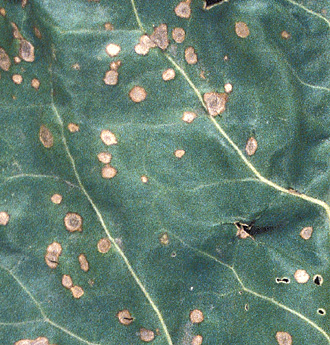
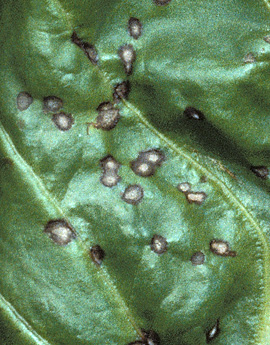
Cercospora leaf spots are circular, about 1/8 to 3/16 inch in diameter, with light to dark tan centers and dark-brown to reddish-purple borders. Elliptical lesions may occur on leaf blades, veins, and petioles.
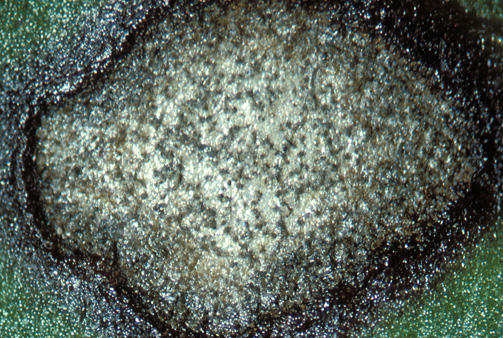
Stromata (black dots about the size of pepper grains) form during humid weather in leaf spots on sugar beet debris or newly infected leaves; they are easily seen with a hand lens.
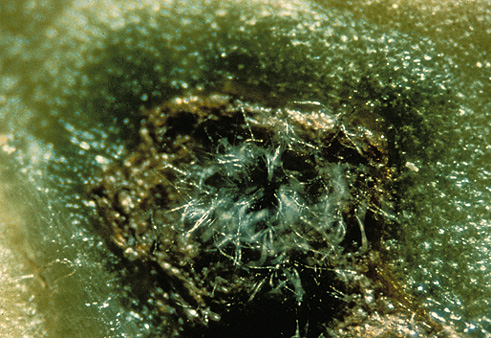
When weather is warm and wet, stromata produce silver or steel-gray spores which gives the leaf spot a fuzzy appearance.
Bacterial Leaf Spot (Pseudomonas syringae pv. aptata)
Economic damage: Commonly occurs but usually not of economic importance; some rhizomania-resistant varieties have shown increased susceptibility to bacterial leaf spot.
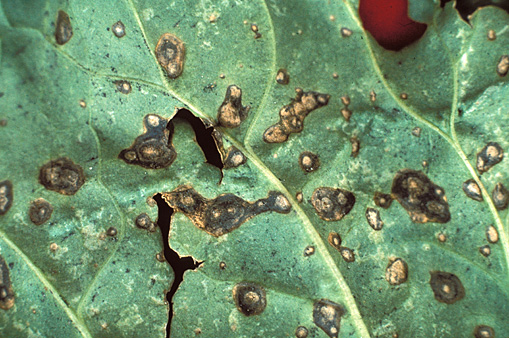
Bacterial leaf spot produces irregular-shaped to circular spots measuring 3/16 to 1/4 inch in diameter. Note tan to dark brown centers with very dark to nearly black borders.
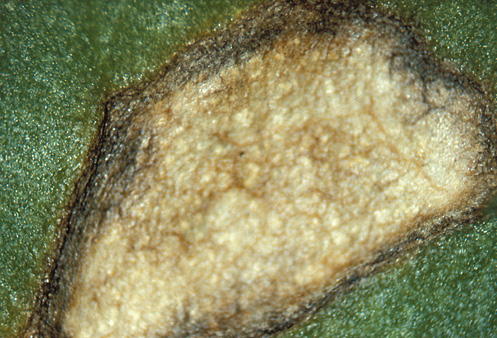
No stromata (black dots) form in bacterial leaf spots; soil particles can lodge onto leaf spots, so brush lesions gently to remove loose debris.
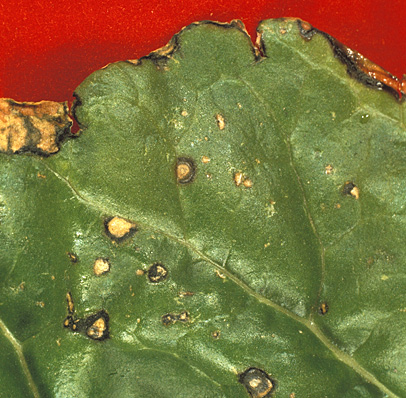
Bacteria also enter at the leaf margins (initially may appear water-soaked) and leaf edges turn yellow and then necrotic.
Cercospora Leaf Spot
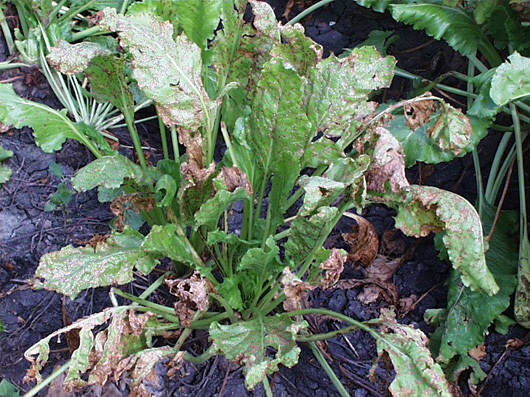
Leaf spots coalesce and kill large areas of leaf tissue. Severely diseased leaves wither and die, but remain attached to the crown.
Sources and spread of inoculum
• Old, partially buried sugar beet debris from previous crop
• Infected sugar beet plants during field season
• Common weed hosts such as lambsquarters, pigweed, mallow, bindweed, crops related to sugar beet (table beet, Swiss chard, spinach) and most wild Beta species
• Spreads via wind, water, and insects
Conditions for disease
• Favored by warm, humid, rainy weather
• Cercospora spores form most readily at 68-79°F at relative humidities of 90-100% (spores do not form at temperatures less than 50°F).
• Spores germinate and infect leaves through stomata (natural openings) at daytime temperatures of 77-95°F, night temperatures above 60°F, and high relative humidities (90-95%) or free moisture. Infection is reduced or inhibited at temperatures less than 59°F or when leaves are wet for less than 11 hours.
• Leaf spots develop from 5 to 21 days after infection, depending on amount of inoculum, temperature, and duration of wet period. Leaf spots typically occur first on lower, older leaves and progress to younger leaves.
Disease Management
• Avoid planting within 100 yards of an infected sugar beet field from the previous year.
• Bury sugar beet leaf debris by fall tillage.
• Plant to nonhost crops for at least two successive seasons
• Plant tolerant sugar beet varieties.
• Apply fungicides judiciously (monitor for disease and conditions favorable for disease).
• Alternate different classes of fungicides to avoid development of resistant strains of Cercospora (see current Sugar Beet Production Guide, Cooperative Ext. Serv., North Dakota State Univ., and Univ. Minnesota).
Bacterial Leaf Spot
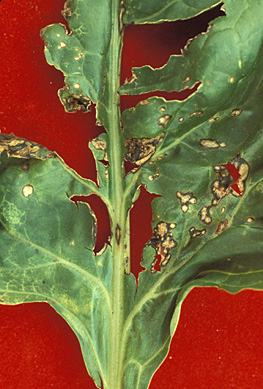
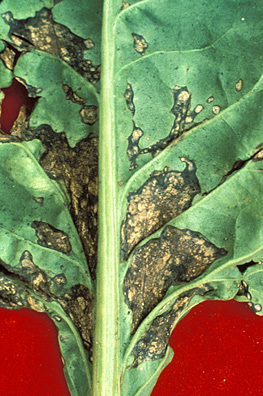
Bacterial leaf spots coalesce between leaf veins; this tissue tears easily and is ragged in appearance.
Sources and spread of inoculum
• Old, partially buried sugar beet debris from previous crop
• Newly infected sugar beet plants
• Other hosts include bean, eggplant, lettuce, and pepper
• Infected sugar beet seed (results in seedling damage)
• Bacterial inoculum spread by splashing rainfall, mechanical and insect injuries
Conditions for disease
• During cool rainy weather, leaf spots usually develop in young plants and before canopy closure; disease may occur throughout the season.
• Infections occur above 36°F and below 95°F; optimal temperatures are between 77-86°F.
• Bacteria enter stomata (natural openings on leaves) or through wounds and injuries caused by hail or wind damage, insects, farming practices, etc.
• Bacteria also enter margins of leaves through hydathodes (natural openings).
• Bacterial leaf spot may be intermixed with Cercospora leaf spot – on the same leaf or even in the same leaf spot.
Disease management
• No effective field controls have been developed.
Photo credits
Figures provided by H.L. Bissonnette, W.M. Bugbee, M.F.R. Khan, and C.E. Windels.
Selected references
Franc, G.D., R.M. Harveson, E.D. Kerr, and B.J. Jacobsen. 2001. Disease management. Pages 131-160 in: Sugarbeet Production Guide. R.G. Wilson, S.A. Smith, and S.D. Miller (eds.) Univ. Nebraska Coop. Ext. EC01-156.
Whitney, E.D. and J.E. Duffus (Eds.). 1986. Compendium of Beet Diseases and Insects. APS Press, The American Phytopathological Society, St. Paul.
Reviewed March 2018


